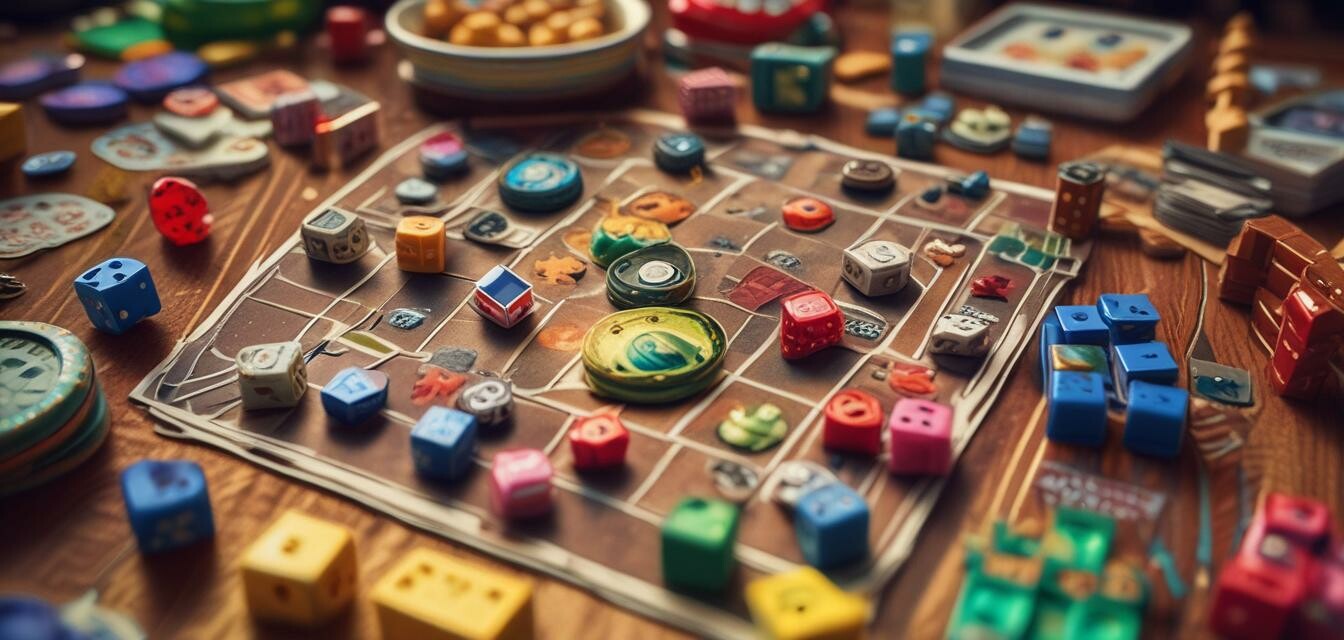
Tips for introducing board games to young children
Key Takeaways
- Start with easy-to-understand games.
- Incorporate fun elements to maintain interest.
- Be patient and ready to explain rules multiple times.
- Encourage teamwork and collaborative play.
- Make it a family tradition to play regularly.
Introducing board games to young children can be a wonderful way to boost their cognitive skills, foster social interactions, and create lasting family memories. The right approach can make all the difference in ensuring that children not only understand the rules but also enjoy their gaming experience. This guide provides effective strategies for successfully introducing board games to young players.
Choosing the right games
Not all board games are suitable for young children. It’s essential to select games that are age-appropriate and interesting enough to hold their attention. Here are some tips for selecting the right games:
- Age recommendations: Always check the recommended age on the game box to ensure it matches your child's maturity level.
- Simple rules: Opt for games that have straightforward rules and short playtimes.
- Interactive elements: Look for games that involve physical engagement, like moving pieces or rolling dice.
- Themed games: Choose games that align with their interests (e.g., animals, superheroes, etc.).
Popular game categories for young children
| Game Type | Description | Examples |
|---|---|---|
| Cooperative games | Games where players work as a team to achieve a common goal. | Forbidden Island, Outfoxed! |
| Memory games | Games that improve memory and cognitive skills through matching actions. | Memory, Spot It! |
| Counting games | Games that help children learn counting and basic math. | Hi Ho! Cherry-O, Count Your Chickens! |
Setting up game time
Creating an inviting and comfortable game environment is crucial. Here are some strategies:
- Dedicated space: Set up a specific area for gaming to create excitement.
- Comfortable seating: Ensure that seating is comfortable for young players to avoid distractions.
- Minimize distractions: Turn off TVs and minimize noise to help the kids focus on the game.
- Timing: Choose a time when your child is not tired or hungry to ensure they can focus.
Teaching the rules
Introducing rules can be tricky, but it's essential to keep them engaged. Here’s how:
- Start with a demonstration: Play a round or two while explaining the rules as you go.
- Use visuals: Visual aids like diagrams or showing pieces can help them understand better.
- Short and simple: Break down the rules into smaller, digestible parts to avoid overwhelming them.
- Encourage questions: Make it clear that it's okay to ask questions before and during gameplay.
Encouraging teamwork and enjoyment
Focus on promoting a cooperative spirit and having fun, rather than just winning. Here are some methods:
- Team challenges: Pair children with adults to increase confidence in gameplay.
- Celebrate efforts: Praise all efforts, regardless of winning or losing, to promote a positive atmosphere.
- Variation: Regularly rotate games to keep the excitement alive and avoid boredom.
Making board games a family tradition
Creating a routine around board game nights can strengthen family bonds:
- Set a schedule: Designate a specific day each week as family game night.
- Rotate who chooses: Have everyone take turns picking the game for the night.
- Encourage creativity: Let kids invent their own rules or variations to existing games.
Pros
- Enhances cognitive skills like counting and critical thinking.
- Promotes family bonding and communication.
- Encourages teamwork and cooperative play.
- Provides a break from screens and technology.
Cons
- Some children may have a shorter attention span.
- Rules may take time to be fully understood.
- Setting up games may require time and effort.
- Not all children might initially enjoy board games.
Conclusion
Introducing board games to young children can be a rewarding experience that encourages social interaction, cognitive development, and lasting family memories. By selecting the right games, creating a conducive environment, explaining rules clearly, and fostering a spirit of fun and teamwork, families can enjoy countless enjoyable game nights. For additional insights on enhancing family gaming experiences, check out our sections on family gaming tips or explore our range of educational games that can aid in learning through play.